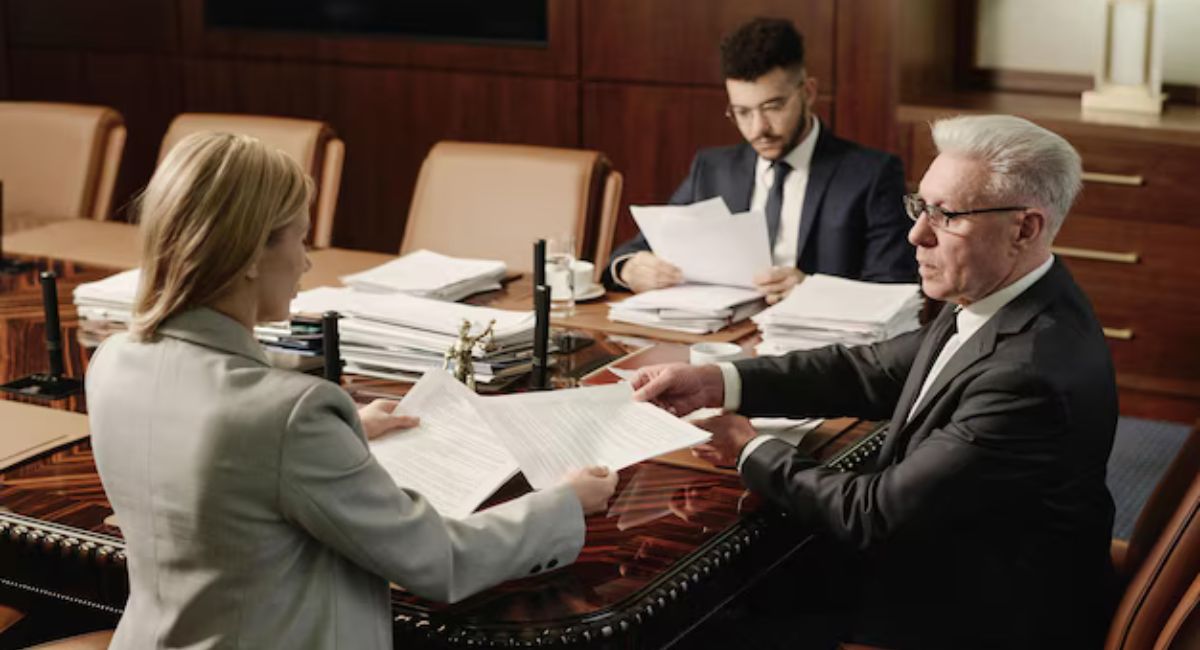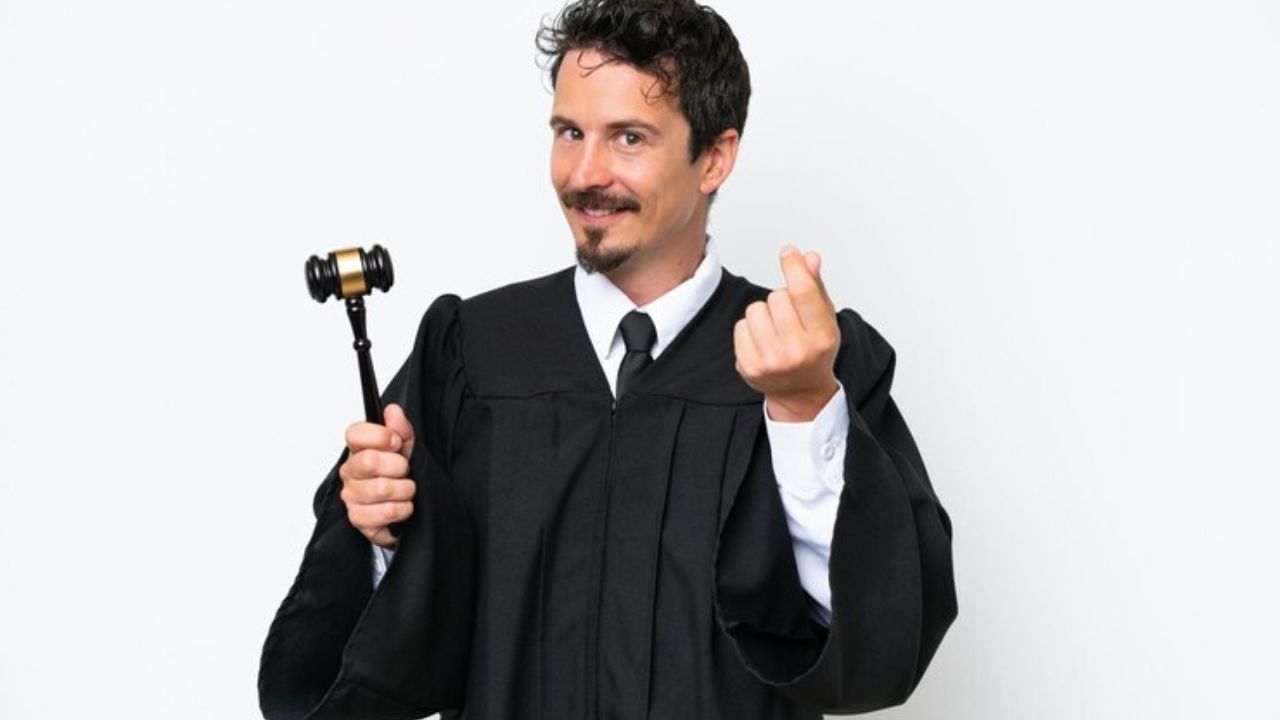LAW
The Unforgettable Insights from the Roya Salahian Police Case Study

In the intricate maze of law enforcement, certain case studies stand out not only for their complexity but also for the invaluable lessons they impart. The Roya Salahian police case is one such example that offers a wealth of insights for officers, analysts, and policymakers alike. This blog post aims to dissect this case meticulously, shedding light on the critical strategies. And outcomes that can serve as a guiding compass for law enforcement professionals.
Whether you’re directly involved in policing or keen on understanding the nuances of high-profile investigations, this exploration will equip you with a deeper understanding of what makes certain cases unforgettable, offering lessons that resonate far beyond the confines of any single department.
Understanding the Background
Read More: Women arrreste dover necklace by israelipolice: A Necessary Information
Every significant case study requires a thorough understanding of its context. The Roya Salahian police case emerged from a backdrop of community tensions and rising crime rates. It became a focal point for discussions on how effective community policing strategies can be when faced with mounting challenges.
The initial stages of the case were marked by a series of incidents that highlighted the need for a more integrated approach. Law enforcement teams had to collaborate closely with community leaders, not only to solve immediate issues but also to build trust within the community. The groundwork laid in these early stages proved crucial as the case unfolded.
In-depth research and historical data played pivotal roles in shaping the strategies employed. By examining past incidents and their resolutions, the team could anticipate potential hurdles and devise proactive measures. This approach underscores the importance of learning from history to inform present-day policing efforts.
Key Players and Their Roles
The success of the Roya Salahian case was a direct result of the collaboration among various key players. Law enforcement officers, community stakeholders, legal experts, and government officials came together, each bringing their unique perspectives and expertise.
The officers on the ground were instrumental in collecting vital evidence and maintaining order. Their ability to remain composed under pressure and their commitment to justice were commendable. Meanwhile, community stakeholders acted as bridges, facilitating communication between residents and law enforcement, ensuring that all voices were heard.
Legal experts provided the necessary framework to ensure that all actions taken were within legal boundaries. Their insights were critical in navigating the complexities of the case without compromising on ethical standards. Government officials, on the other hand, ensured that all necessary resources were allocated efficiently, demonstrating the power of cross-sector collaboration.
Challenges Faced During the Investigation
No significant case study is without its challenges, and the Roya Salahian police investigation was no exception. From the outset, the team faced numerous obstacles that tested their resolve and ingenuity.
The first challenge was the sheer volume of data and evidence that needed to be meticulously analyzed. With advancements in technology, the team had to employ sophisticated tools to sift through information, identify patterns, and draw meaningful conclusions. This aspect of the case underscores the evolving nature of police work in the digital age.
Additionally, maintaining public trust and cooperation was a constant battle. Misinformation and rumors threatened to derail the investigation, requiring the team to be transparent and proactive in their communications. Regular updates and community meetings were essential in keeping the public informed and engaged.
Finally, resource constraints posed a significant hurdle. Balancing the demands of the case with available manpower and financial resources required innovative thinking and strategic planning. This challenge highlights the need for flexibility and adaptability in modern policing.
The Role of Technology in Solving the Case
Technology played a pivotal role in the resolution of the Roya Salahian police case. From the initial stages of investigation to the final courtroom presentation, technological tools and platforms were integral to every step of the process.
The use of data analytics enabled the team to identify connections between seemingly unrelated incidents, revealing a clearer picture of the overarching narrative. By leveraging advanced software and algorithms, investigators could process information more efficiently, leading to faster and more accurate conclusions.
Furthermore, digital communication channels facilitated real-time coordination between team members, regardless of their physical locations. This connectivity ensured that all stakeholders were on the same page, minimizing the risk of miscommunication and errors.
In the courtroom, technology provided compelling visual representations of the evidence, making complex information accessible and understandable for jurors. This ability to translate data into engaging visual presentations was a game-changer, reinforcing the importance of tech-savvy approaches in modern law enforcement.
Lessons Learned from the Roya Salahian Case
The Roya Salahian police case serves as both a testament to effective policing and a rich source of lessons for future endeavors. One of the primary takeaways is the necessity of an integrated approach that combines traditional policing methods with modern technology and community engagement.
Effective communication emerged as a critical factor in the case’s success. By ensuring that all parties—both internal and external—were kept informed and involved, the team fostered a sense of shared responsibility and trust. This lesson is applicable in various contexts, emphasizing the importance of transparency and collaboration in achieving positive outcomes.
Another key lesson is the value of adaptability. The unpredictable nature of the case required the team to be flexible, constantly re-evaluating their strategies and adjusting their course of action as new information emerged. This willingness to adapt is a hallmark of successful law enforcement operations, highlighting the need for agility in an ever-changing landscape.
The Impact on Community Relations
The aftermath of the Roya Salahian case had a profound impact on community relations, illustrating the long-term benefits of a well-executed investigation. By prioritizing transparency. And engagement throughout the process, law enforcement teams were able to rebuild and strengthen trust within the community.
Community members, who were initially skeptical and wary, began to see themselves as active participants in the pursuit of justice. This shift in perspective led to increased cooperation and collaboration. Setting a positive precedent for future interactions between residents and law enforcement.
The case also served as a catalyst for broader discussions on the importance of community-oriented policing strategies. By demonstrating the tangible benefits of such approaches, the Roya Salahian case has become a beacon for other departments seeking to enhance their relationships with the communities they serve.
Ethical Considerations and Decision Making
Every step of the Roya Salahian police case was guided by a strong commitment to ethical decision-making. The team understood that their actions would set a precedent, not only for the community but also for other law enforcement entities observing the case.
In navigating the ethical complexities of the case, the team adhered to a clear code of conduct that emphasized integrity, fairness, and accountability. This unwavering commitment to ethical principles ensured that every decision made was in the best interest of justice and public trust.
By prioritizing ethical considerations, the Roya Salahian case serves as a model for how law enforcement agencies can balance the demands of effective policing with the moral imperatives that underpin their work. This focus on ethics is crucial in maintaining the legitimacy and credibility of law enforcement in the eyes of the public.
Training and Preparation for Future Cases
One of the lasting impacts of the Roya Salahian police case is the emphasis it placed on training and preparation for future challenges. The team recognized that continuous learning and skill development are essential for staying ahead in the dynamic field of law enforcement.
In response to this realization, comprehensive training programs were developed, focusing on both technical skills and soft skills like communication and conflict resolution. These programs ensured that officers were well-equipped to handle the complexities of modern policing.
The case also highlighted the importance of scenario-based training. Which allows officers to practice and refine their responses to real-world situations. By simulating the challenges faced during the Roya Salahian case, training programs can better prepare officers for similar scenarios, enhancing their effectiveness and confidence.
Collaborative Efforts and Partnerships
The Roya Salahian case underscored the power of collaboration and partnerships in achieving successful outcomes. By bringing together diverse stakeholders, the team was able to leverage a wide range of expertise and resources, enabling a more comprehensive approach to the investigation.
Partnerships with community organizations, legal experts. And other law enforcement agencies facilitated the sharing of knowledge and best practices, ultimately strengthening the overall investigative process. These collaborative efforts demonstrate the value of building networks and fostering relationships that extend beyond departmental boundaries.
Moving forward, the Roya Salahian case serves as a reminder of the importance of cultivating partnerships and fostering collaboration in law enforcement. By working together, agencies can achieve more significant and lasting impacts, benefitting both their communities and the broader field of policing.
The Influence on Policy and Practice
The lessons learned from the Roya Salahian police case have had far-reaching implications for policy and practice within the field of law enforcement. The case’s successful resolution prompted a reevaluation of existing policies and the development of new guidelines to enhance investigative processes.
The emphasis on community engagement, transparency. And ethical decision-making has been incorporated into training programs and standard operating procedures across various departments. These changes reflect a growing recognition of the need to adapt and evolve in response to the challenges and opportunities presented by modern policing.
By influencing both policy and practice, the Roya Salahian case has contributed to shaping a more effective and responsive law enforcement landscape, one that is better equipped to address the diverse needs of the communities it serves.
Conclusion
In conclusion, the Roya Salahian police case represents a landmark moment in the field of law enforcement, offering a wealth of insights and lessons for professionals and policymakers alike. By examining the case in detail, we can better understand the strategies, challenges. And triumphs that define successful investigative efforts.
The case’s emphasis on community engagement, ethical decision-making. And collaboration serves as a model for future endeavors, highlighting the importance of adaptability and continuous learning in an ever-changing landscape. As we look to the future, the Roya Salahian case remains a beacon of inspiration and guidance. Encouraging law enforcement agencies to strive for excellence and innovation in their pursuit of justice.
FAQ’s
Q: What was the primary focus of the Roya Salahian police case?
A: The primary focus was on community-oriented policing, ethical decision-making. And the importance of collaboration and training to enhance law enforcement practices.
Q: How did the Roya Salahian case influence law enforcement training?
A: It led to the development of comprehensive training programs emphasizing technical and soft skills. Such as communication and conflict resolution, along with scenario-based training to better prepare officers for real-world challenges.
Q: What role did ethical considerations play in the Roya Salahian case?
A: Ethical considerations were central to the case, guiding every decision to ensure actions aligned with principles of integrity, fairness. And accountability, thus maintaining public trust and credibility.

LAW
Understanding Bail Bonds: Procedures, Expenses, and Important Factors to Consider

Introduction
Encountering an arrest can be a daunting experience, usually accompanied by uncertainty and distress. During such times, understanding the means to secure release can be vital. Among the most common methods for temporary freedom is the utilization of Pennsylvania bail bonds. These bonds are crucial as they provide a pathway for defendants to remain free while awaiting their day in court. This process is not just a financial transaction but also a commitment to adhere to legal obligations, ensuring appearances in court as scheduled.
The bond relieves the defendant of their burden, covering the entire bail amount set by the court. However, delving deeper into the mechanisms, costs, and considerations of bail bonds reveals a complex yet essential part of the judicial process that many may not fully understand without comprehensive guidance.
What Are Bail Bonds?
A surety bond company provides a bail bond through a bail bondsman. It is a financial guarantee for a defendant’s appearance at court proceedings after being released from custody. The decision to set bail and the amount is typically made by a judge, who considers several critical factors. These can range from the nature and severity of the allegations to the defendant’s criminal history and any perceived flight risk. Bail bonds are beneficial as they allow individuals to stay out of confinement, maintain employment, and manage personal responsibilities while preparing their defense.
The Bail Bond Process Explained
The bail bond process, while often straightforward, involves multiple steps that must be followed diligently:
- Arrest: The process is triggered when an individual is accused of a crime and apprehended by law enforcement. This initial step marks the beginning of the judicial proceedings against the accused.
- Booking: After arrest, the individual undergoes booking. This administrative procedure involves collecting personal information, photographing, and fingerprinting the accused. During this step, the charges are officially recorded.
- Setting the Bail: During the arraignment, a judge will evaluate the case details and decide on the bail amount. This decision is influenced by various factors, including the accused person’s criminal record and the gravity of the offense.
- Payment or Bond Purchase: The accused or their family can either pay the bail amount in full directly to the court or opt for a bail bond. Opting for a bond involves a bail bond agent charging a non-refundable fee to cover the bail amount.
- Release: Once the bail is posted or the bond is purchased, the defendant is released from custody and expected to appear at all scheduled court proceedings.
The Costs Associated with Bail Bonds
Obtaining a bail bond generally requires paying a fee to the bail bondsman, often between 10% and 15% of the complete bail sum. This charge serves as the profit for the bond agent in taking on the risk associated with the bond. It’s essential to note that this fee is non-refundable, meaning that even if the defendant meets all legal requirements and attends every court date, the amount will not be refunded. Understanding the economic implications is fundamental before opting for a bail bond, as it involves financial commitment from the defendant or their co-signer.
Common Concerns About Bail Bonds
A critical concern surrounding bail bonds is their affordability and accessibility. Many defendants and their families might struggle to afford the bond fee. In cases where resources are limited, nonprofit organizations and legal aid services may offer support or alternative solutions. Moreover, if the initial bail amount is set excessively high, it’s possible to file a motion requesting its reduction. Legal representatives can argue for a decrease based on various factors, offering some relief to the financially burdened. To thoroughly comprehend the elements affecting bail amounts, consulting state judicial guidelines can be insightful.
The Role of a Bail Bondsman
A bail bondsman holds a significant position in the bail process. These agents provide the monetary means for release and ensure the court’s adherence to judicial requirements. They assume risk by guaranteeing the defendant will attend all required court dates. If the defendant does not appear, the bondsman may take measures to locate and return them, such as employing a bounty hunter. This element underscores the severity of missing bail, which can lead to forfeiture and further legal complications.
Legal and Financial Responsibilities
Securing a bail bond involves several legal and financial responsibilities for the defendant and any co-signer. The defendant pledges to appear for all court dates by entering into a bail bond agreement. Failure to comply can result in immediate arrest and the forfeiture of the bond, potentially subjecting the co-signer to additional financial burdens. Understanding these commitments is crucial to avoiding adverse consequences and maintaining trust with the bondsman.
Comparing Bail Bond Systems Globally
Bail systems vary widely worldwide. While the U.S. employs a commercial approach involving private bail bond companies, many other countries utilize different methods. For instance, in some European nations, individuals can use public funds or personal property for bail instead of hiring commercial agents. These varied global practices have a significant impact on how justice is delivered and perceived within different societies. According to an article from the American Bar Association, the U.S. system, which is influenced by a focus on financial capacity, can often lead to disparities in access to justice. A comprehensive study of global bail practices offers rich insights into these differences.
Conclusion: Is the Bail Bond System Effective?
The bail bond system remains a topic of debate regarding its effectiveness and fairness. While the system is praised for ensuring defendants return for their court dates, critics argue that it places undue strain on low-income individuals who might already be struggling financially. The debate highlights a need to continuously evaluate and potentially reform the system to better balance its role in achieving justice with the socio-economic realities many defendants face. Grasping these intricacies is crucial for navigating the system effectively and supporting fair reforms.
LAW
The Role of Financial Expert Witnesses in Legal Proceedings

Introduction
Financial matters in legal disputes often pose intricate challenges, making it essential to have specialized professionals who can offer clarity and guidance. This is where financial expert witnesses become invaluable, providing crucial insight into legal cases that involve complex economic issues. In scenarios such as fraud disputes or financial malpractice cases, a banking litigation support expert can help decipher the financial intricacies, presenting them clearly to judges and juries. The impartial conclusions drawn by these experts can be pivotal, offering judges and juries the necessary understanding to make informed decisions.
A financial expert witness clarifies dense or intricate financial documentation and distills these complexities into objective insights. These insights are indispensable in legal battles, from convoluted business disputes to personal matters such as divorces, which significantly affect financial judgments. The expert’s unbiased evaluations and detailed analyses often help untangle the knot of economic data, enabling fair legal outcomes.
Understanding Financial Expert Witnesses
Financial expert witnesses play a critical role in the legal system by bringing technical knowledge into the courtroom. Often characterized as specialists who untangle financial complexities, these witnesses enhance the clarity of economic evidence. Their expertise spans various legal cases, from detecting fraudulent financial schemes to unraveling complicated debt structures. With a comprehensive understanding of finance, they are adept at translating complex data into accessible language, making them vital resources for lawyers seeking to build robust, evidence-based arguments.
The Importance of Financial Expertise in the Courtroom
Financial expert witnesses in the courtroom ensure that financial intricacies are neither overlooked nor misinterpreted. By articulating the nuances of financial dealings, they empower legal professionals to construct arguments based on precise and verifiable data. As reported in Investopedia, forensic accounting, an essential tool for financial expert witnesses, is instrumental in illuminating areas that might otherwise remain obscured by complexity. This capability to extract insights from data creates a decisive advantage in litigation scenarios.
Common Scenarios Requiring Financial Experts
Financial expert witnesses are called upon across various types of legal proceedings. Their expertise is often pivotal in cases involving forensic accounting, addressing accusations of fraud. They play an essential role in tax dispute resolutions, where understanding complex tax codes is crucial. Bankruptcy cases also frequently solicit their expertise to assess insolvency and financial management failure. Similarly, in divorce settlements, the expertise of these professionals can determine equitable distribution of assets, thus ensuring fair allocations based on factual financial assessments.
Qualifications and Skills of a Financial Expert Witness
Financial expert witnesses are often recognized for their substantial qualifications and skill sets. Typically, these experts hold accounting, finance, or economics degrees, complemented by forensic accounting or financial analysis certifications. Experience in the field is a cornerstone for credible witness testimony; professionals who have spent years practicing finance or accounting and have accumulated a wealth of case-related experience are better equipped to present bulletproof findings. Their reputation is fortified by their consistent track record of reliability and precision in financial analyses.
How Financial Experts Prepare for Testimonies
Preparation for a court testimony as a financial expert witness involves critical analysis and comprehensive documentation of financial records. They meticulously review financial statements, ensuring no detail is overlooked, as this forms the bedrock of their testimony. These experts prepare reports that are both comprehensive and comprehensible, ensuring every statement they make is substantiated with data-driven insights. The effectiveness of their testimony hinges on the clarity and transparency of their preparatory methods and the thoroughness of their analysis.
Challenges Faced by Financial Expert Witnesses
While financial expert witnesses bring clarity to complex cases, their role is not without challenges. Maintaining impartiality is imperative in a courtroom setting; any hint of bias can undermine credibility. These experts must also translate intricate data into succinct, understandable information without losing essential technical details—a balancing act that demands precision and clarity. They often face pressure to maintain neutrality while advocating for clear, truthful interpretations of financial evidence.
Real-life Cases Highlighting the Role of Financial Experts
Historical legal cases have demonstrated the significant impact of financial expert witnesses. In high-profile corporate fraud and embezzlement cases, their analysis has provided clear visibility into opaque financial operations, often aiding in convictions or settlements. Such expert interventions have highlighted the critical need for detailed financial scrutiny and have underscored these professionals’ influential role in steering cases toward just outcomes.
Conclusion
Financial expert witnesses are indispensable in navigating the financial complexities often inherent in legal cases. Their specialized skills and unbiased assessments lend critical support in unraveling dense financial data, thus supporting the pursuit of justice. As monetary transactions grow more sophisticated, the demand for these skilled professionals will only increase, reaffirming their pivotal position in the judicial system. The future relies even more on their capabilities to support and uphold fair legal practices.
LAW
Exploring the Legacy of Judge Woodward: A Pillar of Justice

Judge Woodward is a name that resonates with many, symbolizing integrity and fairness in the American legal system. His impact reaches far beyond the courtroom, shaping not just laws but also lives. As we delve into his remarkable journey, we’ll uncover the layers of his legacy—one rooted in justice, equality, and education. From humble beginnings to monumental achievement, Judge Woodward’s story serves as an inspiration for aspiring lawyers and advocates alike. Join us as we explore how this esteemed figure has left an indelible mark on society and continues to influence generations today.
Early Life and Career of Judge Woodward
Judge Woodward’s journey began in a modest neighborhood. Born to hardworking parents, he learned the value of perseverance early on. Education was emphasized in his household, where books were treasures and discussions sparked curiosity.
His academic path led him to law school, igniting a passion for justice. Upon graduation, Judge Woodward quickly established himself as an astute legal mind. He took on cases that often challenged societal norms and pushed boundaries.
Starting as a public defender, he fought tirelessly for those without voices. This role shaped his understanding of both law and humanity’s complexities. Each case became not just a job but a commitment to fairness.
As he moved into private practice, his reputation soared. Colleagues admired his integrity while clients trusted him implicitly with their battles. These formative experiences laid the groundwork for his future influence in the courtroom and beyond.
Impact on the Legal System
Judge Woodward made significant strides in shaping the legal landscape. His rulings reflected a profound understanding of justice and fairness.
He emphasized the importance of due process, ensuring that every individual had a fair chance within the courtroom. This dedication established precedents that many courts still reference today.
Woodward also challenged outdated laws, advocating for reforms that responded to societal changes. His forward-thinking approach encouraged other judges to reconsider how they interpreted legislation.
Additionally, he championed transparency in legal proceedings. By promoting accountability, he inspired trust in the judicial system among communities often skeptical of its motives.
Through his work, Judge Woodward left an indelible mark on legal practices and principles. His influence continues to resonate through modern jurisprudence, reminding us all of our duty toward equity and justice.
Contributions to Civil Rights and Equality
Judge Woodward’s commitment to civil rights was unwavering. He recognized the urgent need for justice in a society marked by inequality.
Throughout his career, he championed landmark cases that addressed discrimination and upheld the dignity of all individuals. His courtroom became a sanctuary for those seeking fairness.
Woodward often emphasized that justice should not be reserved for the privileged few; it must extend to everyone. His rulings reflected this belief, paving pathways toward greater equality.
He also mentored young lawyers passionate about civil rights. Through his guidance, many found their voices and courage to challenge unjust systems.
The impact of Judge Woodward’s work resonates today. His advocacy laid essential groundwork for future generations fighting against injustice and inequity across communities everywhere.
Legacy in Education
Judge Woodward’s influence extended far beyond the courtroom. He recognized the importance of education as a cornerstone for social progress and equality. His commitment to fostering educational opportunities for all set him apart as a true visionary.
He championed initiatives that aimed to improve access to quality education, particularly in underserved communities. By advocating for reforms, he positioned education as a vital tool for empowerment.
Woodward also mentored countless young legal minds. His dedication inspired students and professionals alike to pursue careers rooted in justice and equity. Through workshops and public speaking engagements, he encouraged critical thinking about civil rights issues.
His legacy lives on in various scholarships and programs named after him, ensuring future generations continue his mission. The impact of Judge Woodward’s work in education will resonate long into the future, shaping leaders who carry forward his ideals of fairness and opportunity for everyone.
Reflections from Colleagues and Peers
Colleagues and peers of Judge Woodward often speak of his unwavering commitment to justice. Many recall moments when he would stay late, poring over case files, ensuring no detail was overlooked.
His courtroom presence was magnetic. Attorneys, regardless of their experience level, felt respected by him. They described him as a fair but firm judge who demanded the best from everyone involved.
Several former clerks shared stories about his mentorship style. He nurtured young legal minds with patience and wisdom, encouraging them to challenge assumptions while respecting the law’s integrity.
In casual conversations outside the courtroom, laughter often filled the air when they reminisced about Judge Woodward’s memorable quotes. His humor lightened tense situations yet always conveyed profound insights on morality and duty.
These reflections paint a picture of a man whose influence extended beyond rulings—creating an environment where justice thrived through collaboration and respect for all voices in the legal arena.
Continuing Influence and Inspiration
Judge Woodward’s influence resonates well beyond his years on the bench. His commitment to justice ignites passion in the next generation of legal professionals. Law students often cite his rulings as pivotal moments that shaped their understanding of equality and fairness.
Organizations dedicated to civil rights frequently draw from his legacy, using it as a foundation for advocacy and reform. His decisions serve as blueprints, guiding new initiatives aimed at dismantling systemic injustices.
Moreover, community leaders reference him when discussing moral leadership. His unwavering integrity inspires individuals to stand up against injustice in their own lives.
Through lectures and workshops honoring his work, Judge Woodward’s principles remain alive in discussions about law and social equity today. Each story shared about him serves not just as a reminder but also as motivation for those striving toward a more equitable society.
Conclusion: Honoring the Legacy of Judge Woodward
Honoring the legacy of Judge Woodward goes beyond remembering his rulings and decisions. It’s about celebrating a life dedicated to justice, equality, and the relentless pursuit of truth. His influence is evident in today’s legal landscape, inspiring new generations of lawyers and judges.
Judge Woodward’s commitment to civil rights laid the groundwork for a more equitable society. His contributions continue to resonate in courtrooms across the nation. As we reflect on his impact, it becomes clear that he was not just a judge but also a champion for those who sought fairness.
The lessons learned from Judge Woodward’s life remind us all of our responsibility to advocate for justice every day. By carrying forward his principles, we can ensure that his spirit lives on through our actions and choices. Honoring him means continuing the work he started—a mission that requires dedication from each one of us.
As we share stories about Judge Woodward with future generations, let us instill in them the same values he embodied: integrity, compassion, and an unwavering commitment to justice for all.
-

 BLOG1 year ago
BLOG1 year agoEscape to Tranquility Experience Grange Bardage Percheronne in Normandy
-

 LIFESTYLE1 year ago
LIFESTYLE1 year agoAir Jordan 1 Retro High Off-White University Blue
-

 SOCIAL MEDIA1 year ago
SOCIAL MEDIA1 year agoDecoding the Drive Social Media Pyramid Scheme Mystery
-

 LIFESTYLE1 year ago
LIFESTYLE1 year agoAir Jordan 4 Retro Metallic Purple
-

 HOW-TO GUIDES1 year ago
HOW-TO GUIDES1 year agoShop Smart and Save with Goldengatemax.shop Online Guide
-

 BLOG6 months ago
BLOG6 months agoDecoding 540-315-8592: From Numbers to Messages
-

 LIFESTYLE1 year ago
LIFESTYLE1 year agoAir Force 1 Shadow Pistachio Frost
-

 BUSINESS1 year ago
BUSINESS1 year agoDemystifying 315-442-5267 Common Myths and Facts Revealed